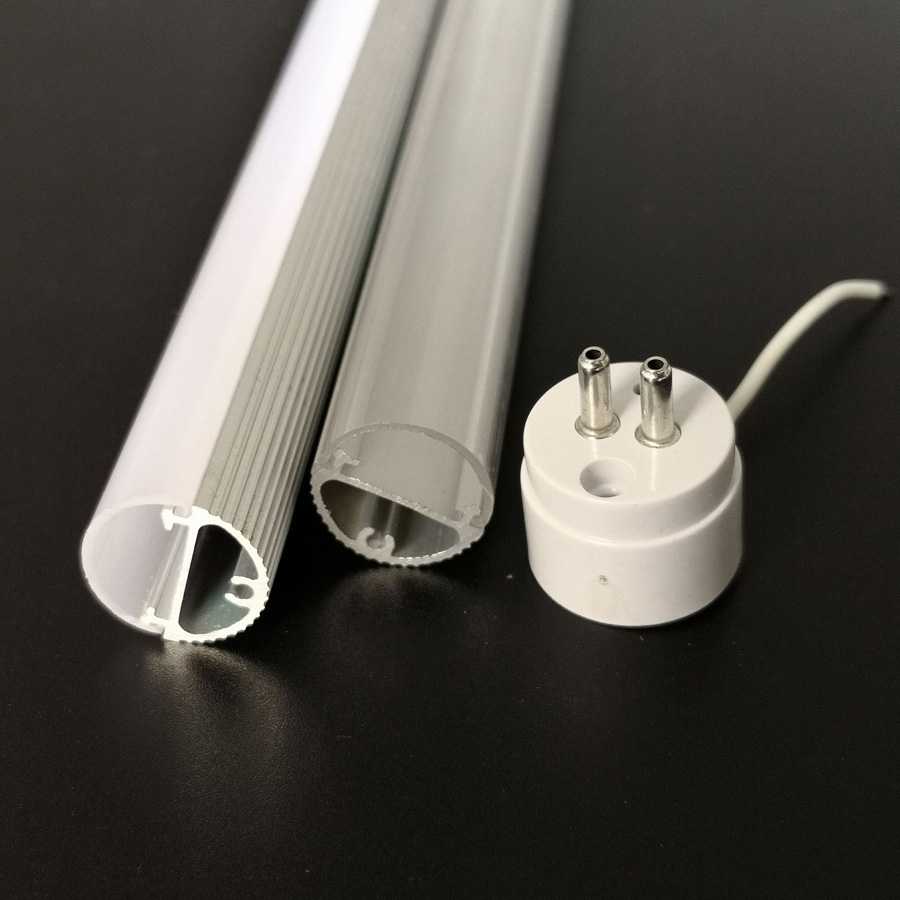Keeping it Cool: The Crucial Role of Thermal Management in LED T5 Plastic Tube Housing
2023-12-08
Introduction:
In the realm of energy-efficient lighting, LED T5 tubes have become a cornerstone for their longevity and low energy consumption. Beyond the luminosity and design, a critical factor influencing their performance and lifespan is the thermal management system within the plastic tube housing. In this blog, we'll explore the intricate dance between heat and light, and how an effective thermal management system contributes significantly to the overall performance and longevity of LED T5 tubes.
1. Understanding LED Heat Generation:
LED T5 tubes, like all electronic components, generate heat during operation. While LEDs are more energy-efficient than traditional lighting sources, they are not completely devoid of heat production. Effective thermal management becomes crucial to maintain optimal operating conditions.
2. Preserving LED Efficiency:
LEDs are most efficient when operated at lower temperatures. A well-designed thermal management system dissipates heat away from the LED components, preventing excessive temperature buildup. This preservation of lower temperatures translates directly into maintained efficiency and consistent light output over the LED T5 tube's lifespan.
3. Preventing Lumen Depreciation:
High temperatures can lead to lumen depreciation, a phenomenon where the light output of LEDs decreases over time. The thermal management system actively combats this by keeping the operating temperatures within a range that minimizes lumen depreciation, ensuring that the LED T5 tube remains bright and effective throughout its lifespan.
4. Extending Lifespan:
Heat is a silent adversary to the longevity of electronic components. Prolonged exposure to elevated temperatures can accelerate the aging process, leading to premature failure. A robust thermal management system actively contributes to extending the lifespan of LED T5 tubes, making them a durable and reliable lighting solution.
5. Preserving Color Quality:
The color quality of LED lighting is sensitive to temperature variations. Inadequate thermal management can lead to shifts in color temperature and compromise the overall color rendering index (CRI). A well-designed system maintains stable temperatures, preserving the intended color quality and ensuring consistent, true-to-life illumination.
6. Preventing Thermal Runaway:
Thermal runaway is a phenomenon where the temperature of an LED increases uncontrollably, leading to catastrophic failure. Effective thermal management systems include features such as heatsinks, thermal pads, and conductive materials that prevent thermal runaway, ensuring the safety and reliability of the LED T5 tube.
7. Optimizing Design for Heat Dissipation:
The design of the plastic tube housing itself plays a crucial role in heat dissipation. Features such as fins, grooves, or specialized surfaces are integrated into the housing design to maximize the surface area exposed to air, facilitating efficient heat dissipation.
8. Maintaining Energy Efficiency:
Overheating not only affects the LEDs but can also compromise the efficiency of other electronic components within the LED T5 tube, such as the driver. Effective thermal management preserves the efficiency of the entire system, contributing to sustained energy savings throughout the tube's operational life.
Conclusion:
In the fascinating interplay between heat and light, the thermal management system within LED T5 plastic tube housing emerges as a silent guardian, preserving efficiency, maintaining brightness, and extending the overall lifespan of the lighting solution. As we continue to push the boundaries of energy-efficient illumination, the meticulous design of thermal management systems remains a beacon, ensuring that LED T5 tubes shine bright for years to come.



